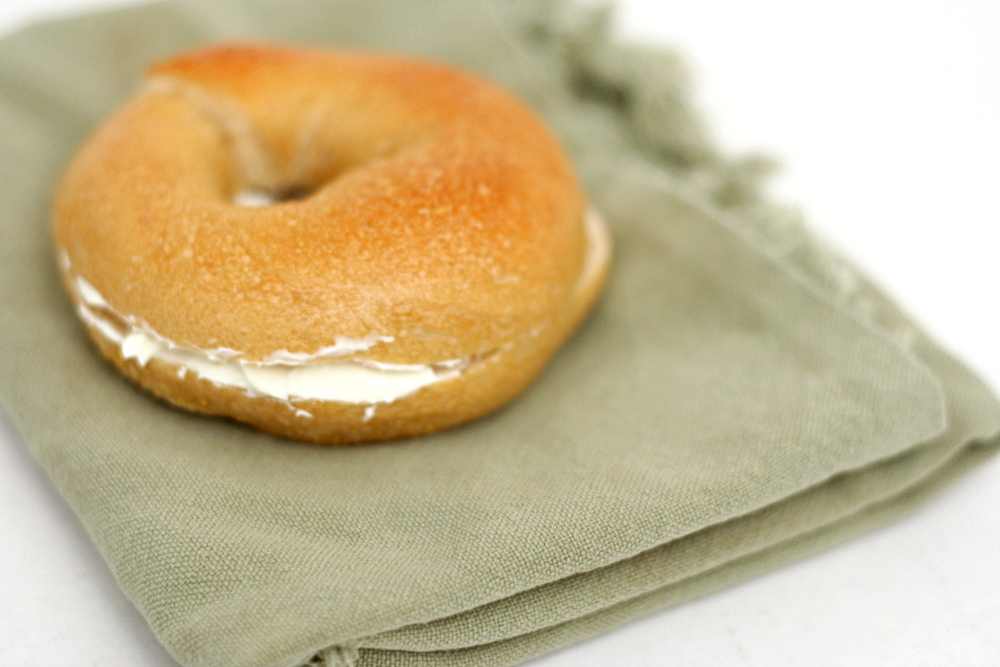
After my initial trials with sourdough last year, in which I mixed up an easy starter and made a couple loaves of not-at-all sourdoughy bread, I gave up for a while. I ignored the starter I’d made until it eventually dried up and I had to throw it away. When I visited my parents last winter, I tried making bread with my mom’s sourdough starter, which is much older than mine was, to see if it would taste sour. It did, at least a little, so my mom sent me home with some of her starter.
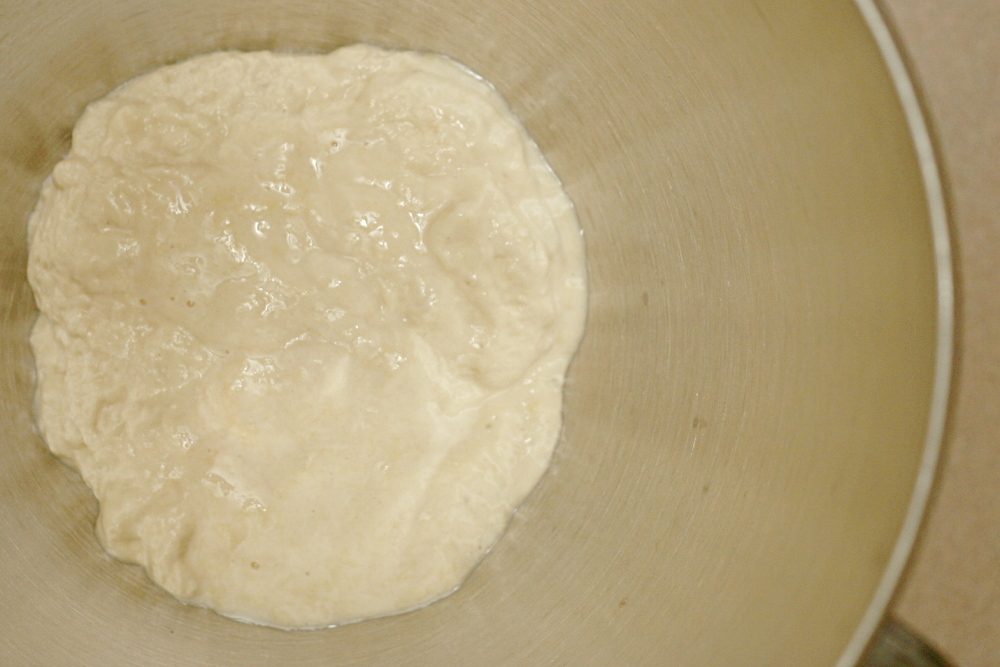
Which I, again, basically ignored, for six months, until I had a friend visit who is experienced in the ways of sourdough. She gave me some tips on how to bring my old neglected starter back to life, and, more importantly, helped me realize that sourdough starter can be used in all sorts of breads, not just rustic loaves that I want to taste sour.
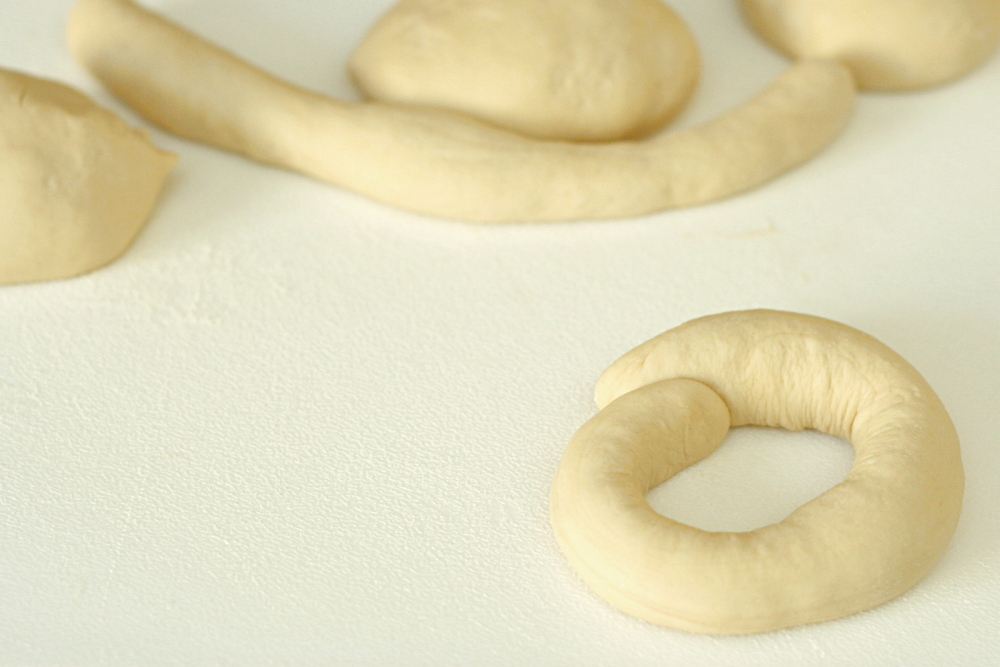
This was important because I don’t make rustic breads all that often, certainly not enough to keep my sourdough starter healthy. But there are some breads that I do make every week or so – pizza and bagels. The transition to sourdough was especially easy for bagels.
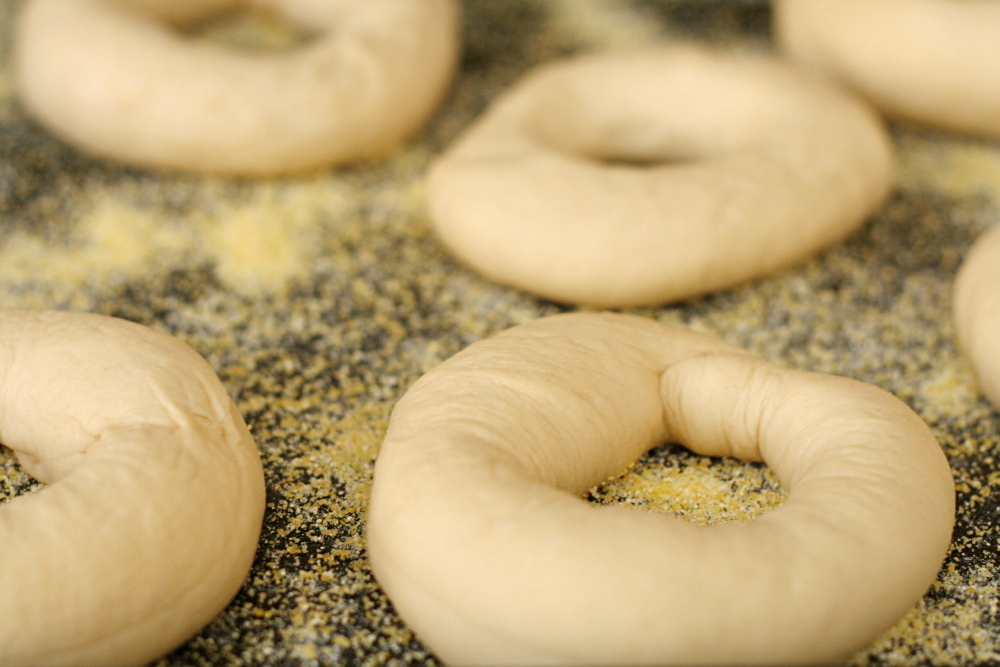
I’ve been making bagels for years, usually using a slight adaptation of Peter Reinhart’s recipe. His recipe utilizes a sponge, a mixture of flour, yeast, and water that has to sit for a few hours before the recipe can be completed. I simply replaced that sponge with sourdough starter, so I saved myself a step and could more quickly move on to mixing and kneading the dough.
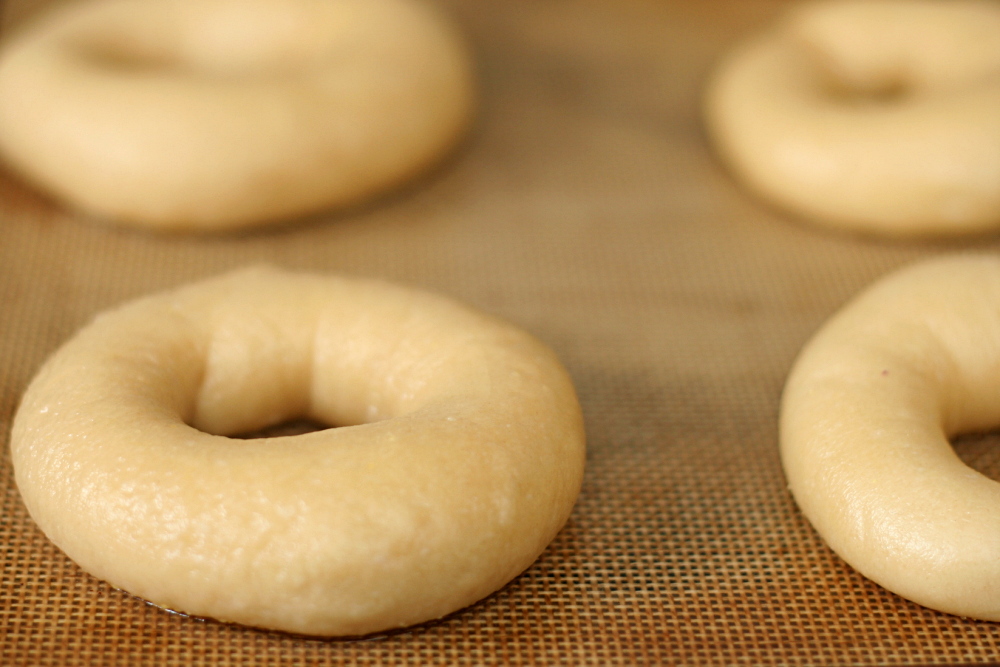
The only problem with this method is that I don’t always keep enough starter around to make even half of Reinhart’s recipe. I was only able to make six small bagels. So I tried again, this time using half the amount of starter and mixing it with more flour and water. Once that was frothy, I continued with the recipe.
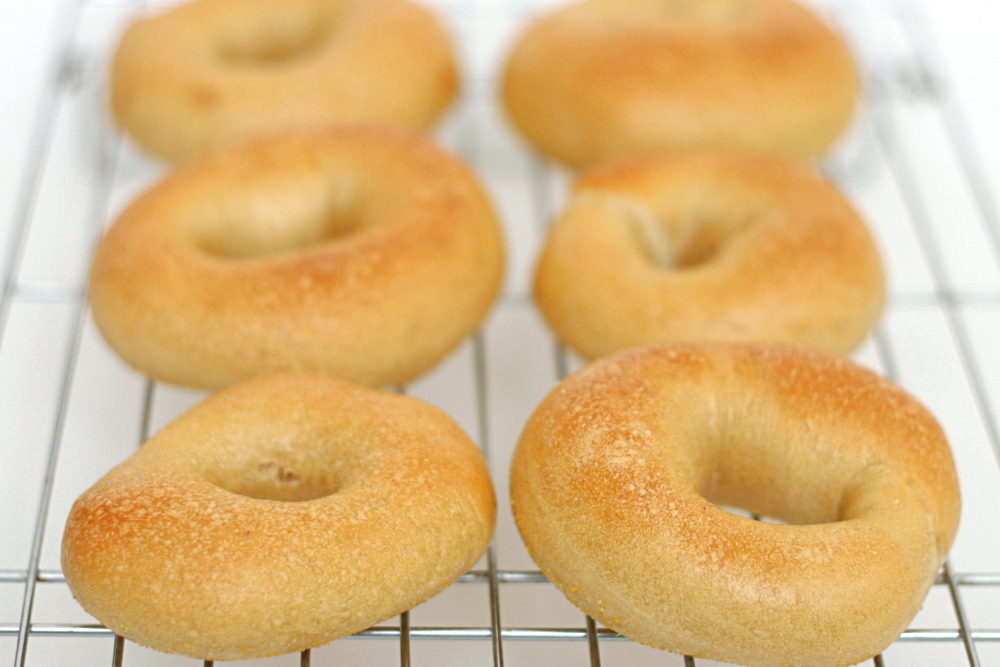
Both batches of bagels were very good. Neither had a strong sourdough flavor, although it was slightly more intense in the first batch, where the starter completely replaced the sponge. In the future, I’ll make whichever recipe I have the right amount of starter for. Because the version that completely replaces the sponge with starter is quicker, plus sourdough starter is so easy to make, I’ll probably just make some extra starter the day before I want to make bagels. Altogether, it’s a great way to use my starter often enough to keep it active.
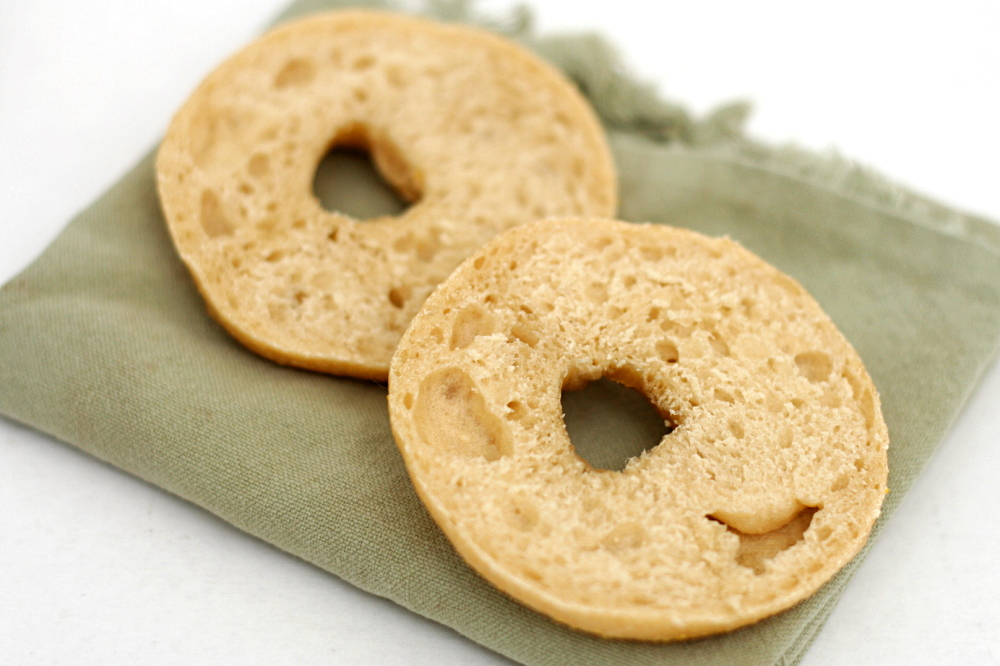
One year ago: Mixed Berry Cobbler
Sourdough Bagels (adapted from Peter Reinhart’s Bread Baker’s Apprentice)
12 small bagels or 8 large bagels
My sourdough starter is half flour and half water, by weight.
16 ounces sourdough starter
¼ teaspoon instant yeast
1¾ cup (8 ounces) bread flour (approximately)
1½ teaspoons salt
1 tablespoon barley malt syrup
1 tablespoon cornmeal
1. Place the sourdough starter in the bowl of a standing mixer and leave it at room temperature until it loses its chill and becomes frothy, 1-2 hours, depending on how active your starter is.
2. Add the additional yeast to the starter and stir. Then add most of the remaining flour and all of the salt and malt. Mix on low speed with the dough hook until the ingredients form a ball, slowly working in the remaining flour to stiffen the dough.
3. Knead at low speed for 6 minutes. The dough should be firm and stiff, but still pliable and smooth. There should be no raw flour – all the ingredients should be hydrated. If the dough seems too dry and rips, add a few drops of water and continue kneading. If the dough seems tacky or sticky, add more flour to achieve the stiffness required. The kneaded dough should feel satiny and pliable but not be tacky.
4. Immediately divide the dough into 8-12 equal pieces. Form the pieces into smooth balls.
5. Cover the balls with plastic wrap and allow them to rest for 20 minutes. Dust a baking sheet with the cornmeal.
6. Form each dough ball into a rope 9 inches long by rolling it under your outstretched palms. Do not taper the ends of the rope. Overlap the ends of the rope about 1 inch and pinch the entire overlapped area firmly together. If the ends of the rope do not want to stick together, you can dampen them slightly. Place the loop of dough around the base of your fingers and, with the overlap under your palm, roll the rope several times, applying firm pressure to seal the seam. The bagel should be roughly the same thickness all the way around.
7. Place each of the shaped pieces about an inch apart on the prepared pan. Cover loosely with plastic wrap. Let the pan sit at room temperature for about 20 minutes.
8. Check to see if the bagels are ready to be retarded in the refrigerator by using the ‘float test.” Fill a small bowl with cool or room-temperature water. The bagels are ready to be retarded when they float within 10 seconds of being dropped into the water. Take one bagel and test it. If it floats immediately return the tester bagel to the pan, pat it dry, cover the pan, and place it in the refrigerator overnight (it can stay in the refrigerator for up to 2 days). If the bagel does not float, return it to the pan and continue to proof the dough at room temperature, checking back every 10 to 20 minutes or so until a tester floats. The time needed to accomplish the float will vary, depending on the ambient temperature and the stiffness of the dough.
9. The following day (or when you are ready to bake the bagels), adjust the rack to the middle position and preheat the oven to 450 degrees. Bring a large pot of water to a boil (the wider the pot the better). Have a slotted spoon or skimmer nearby. Line a baking sheet with parchment paper.
10. Remove the bagels from the refrigerator and gently drop them into the water, boiling only as many as comfortably fit (they should float within 10 seconds). Stir and submerge bagels with Chinese skimmer or slotted spoon until very slightly puffed, 30 to 35 seconds. Remove rings from water; transfer to wire rack, bottom side down, to drain.
11. Transfer boiled rings, rough side down, to parchment paper-lined baking sheet. Bake until deep golden brown and crisp, about 12 minutes.
12. Remove the pans from the oven and let the bagels cool on a rack for 10-15 minutes before serving.
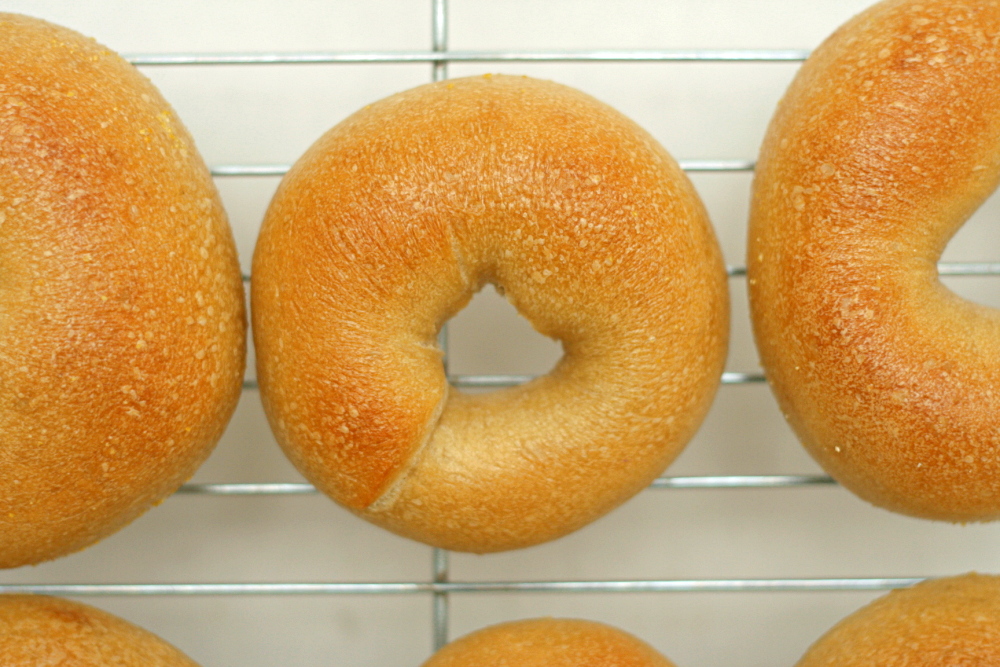






I don’t know if I’ve ever had a sourdough bagel. I love that you form your bagels in the traditional method. They are just beautiful.
Wow, your bagels look absolutely perfect! I’ve never had a sourdough bagel but it sounds amazing.
Cool. I bet you can adapt nearly all yeast recipes to it (though it’ll involve recalculating the ratios… sigh!) 🙂 Dan Lepard has a bunch more starter recipes for Italian biga acida and French levain.
These look awesome!!! I love bagels:)
I’m jealous. Your bagels look yummy, and I just had a bagel *fail* this weekend. Kudos to you!
oh goodness these look fabulous!!
These look amazing!
I am by no means an expert on either breadmaking or sourdough starters. However, I did once hear this fascinating tidbit: the sourdough in San Francisco will always taste different (unique) from the sourdough in Boston, etc. This is because the starter is designed to pick up bacteria that are floating through the air, thus creating the fermentation (perhaps I am getting this part wrong) that creates leavening later on. And indigenous airborne bacteria vary from region to region. (Your bagels look delicious by the way.)
Oh my goodness, your photo of sour cream bagels is making me so hungry. Send me some, please. They look delicious. I should cross over into the bread baking world as many TWD bakers have. Looks fun, however I am already fighting the calories, so …. what’s a girl to do.
Great job
AmyRuth
I like your method for replacing the sponge with starter. I’ll have to try out your recipe. The bagels look so good!
Well, I tried them =). They didn’t turn out exactly as I would’ve liked, but they are pretty tasty. I substituted sorghum for the malt, which I realize changes the whole thing quite a bit. I looked for malt powder to but in the boiling water, but my store only had chocolate flavored…I decided that was *not* a go. The malt makes them shiny (so says my boyfriend, who spent his early 20s working in a bagel shop). They’ve got a nice sour taste – but not too sour. I’ll definitely do them again (if I can find some non-chocolaty malt!). Thank you!
i just tried these for the third time…and you know what they say, third time is a charm! they are tasty and mine are quite sour/tangy! it’s an easy recipe too. love it.
I made these yesterday while I was watching the Superbowl (Yeah Giants!) and I have to say that my bagels turned out AMAZING! I couldn’t believe I made a decent bagel that rivals that of one of my favorite bakeries in CA where I grew up! I live on the East Coast now and too far from my favorite places in NY to get good bagels. Now I can make my own! I made my own starter from this websote if anyone is interested and it is fool proof!
http://whatscookingamerica.net/Bread/SourdoughStarter.htm
BTW, I used moleassess intstead of the barley malt syrup after finding the ability to substitute the ingredients on-line. It still worked! LOVE LOVE LOVE it! Your bread making confidence will sky rocket if you just follow the directions to make these bagels! Happy Baking!
I just found your lovely blog and have been really enjoying it! I love that you have a few sourdough recipes, too! I have been loving using my starter! In fact, a few of us are doing a fun new monthly baking group totally devoted to our sourdough starters and this month we are doing bagels! We would love for you to join us! http://sourdoughsurprises.blogspot.com/
Just tried this recipe last night and we loved it! The only thing I’ll say is do not take the straining step lightly. I don’t think I waited long enough on a couple and the bottoms were a little soggy/hard after baking. Thanks for this tho, it’s definitely going in my arsenal!
I just made bagels for the first time and they were good, but it wasn’t a recipe that used sourdough. I normally bake sourdough bread and was happy to find your recipe. Are you using a 100% hydration starter for this recipe and can the barley malt syrup be replaced with barley malt powder?
Fantastic recipe – thank you for sharing! Followed to the letter with the exception of substituting molasses for the barley malt syrup and boiled bagels in a sugar/baking powder water. Mixed my dough by hand and the consistency was lovely. Sourdough taste was great. Thanks again — will be making regularly and sharing recipe with friends.
Your photos look terrific.
I’ve been making my sourdough bread for about 7 months now, and am reasonably confident with my method. I started out using Nancy Silverton’s Breads from the La Brea Bakery, and had to tone down my temperatures and baking times from her recipe. Took about 4-5 batches to get it right. I make 4 loaves at a time now because the effort and clean-up just makes more sense to bake more than a couple. I stage them coming out of the fridge to bring the temp up (after the overnight rise) a half-hour to 45 minutes between batches.
Your recipe looks delicious, and I imagine more sour than the bagels I just made from the La Brea Bakery book. I will try using all sourdough starter next time instead of about 1/3 starter to 2/3 new high-gluten flour and water. I was surprised at how professional my very first batch looked and how good they were. A nice bite on the outside, with a tender but substantial chew in the middle. Don’t be afraid to dive in! If you’ve made a little bread the bagels are actually easier and quicker.
A tip: If you roll the dough into a 10″ log as I do on an unfloured surface, dip your fingertips in water and just lightly spritz the board with your fingers; the dough rolls more easily, instead of sliding across the surface. I dampen the two ends of the roll a touch, it helps seal the dough together.
I only kept my bagels in the boiling water for about 20 seconds, and after I seeded the tops I baked them right on my baking stones in the ovens, one batch I left on the parchment…didn’t notice a difference. I put semolina on my peel before I put the bagels on it, and they slid off easily. I pre-heated my ovens to 450, but before putting the bagels in I lowered the temp to 425.
I hope this isn’t too long, I’m just enthusiastic about the results and want to share what made my product come out well!